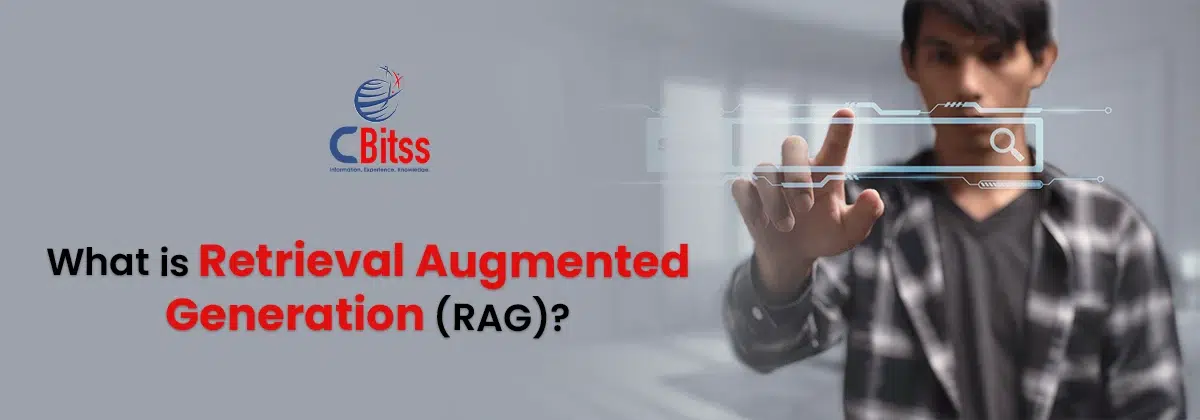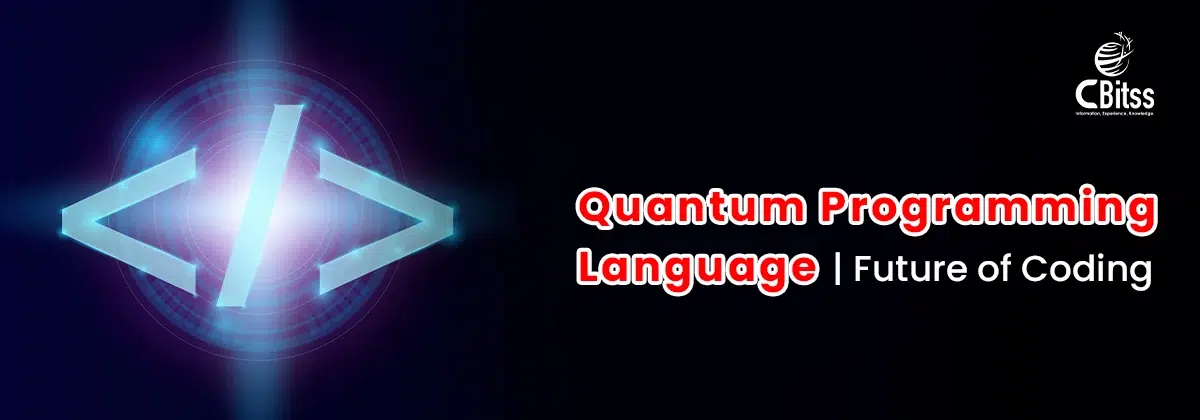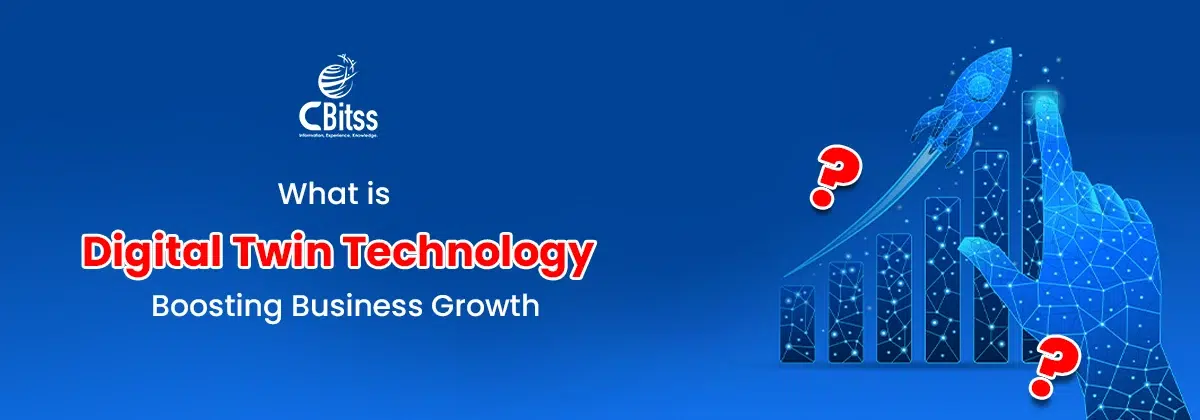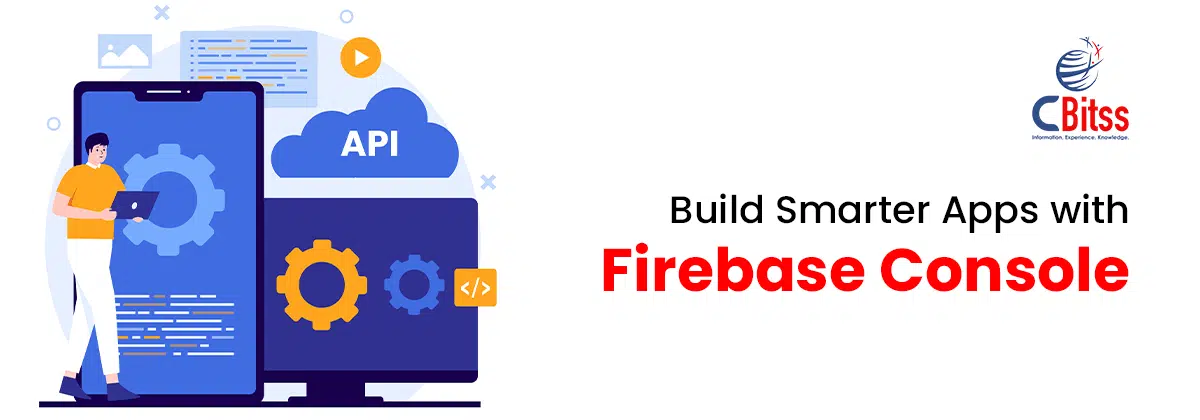Table of Contents
ToggleIntroduction
Have you ever asked What is Retrieval Augmented Generation? If so, you will find your answer here. Retrieval-augmented generation (RAG) establishes a system that unites large language models (LLMs) with knowledge retrieval systems to provide AI agents with access to current and relevant information dynamically, rather than relying on pre-trained knowledge.
Through this article, you will get to know what retrieval-augmented generation is, how it is performed, and why it is transforming the mode through which AI accesses and uses information. Its uses, advantages, limitations, and future trends. We are going to discuss its uses, advantages, challenges, and future trends, and it will provide you with a clear picture of how RAG is working towards building next-generation AI systems.
Evolution of Retrieval Augmented Generation
RAG’s early versions were predominantly utilized in search, research, and enterprise applications. Neural generation models, such as LangChain, are based on the retrieval augmented generation framework and are capable of combining real-time information in databases, APIs, and knowledge bases.
By 2025, what is retrieval augmented generation RAG will be able to support augmented reasoning and cross-domain problem-solving, not just simple factual retrieval. In the current world, what is RAG retrieval augmented generation is being utilized in fields such as healthcare, legal analysis, and scientific research, where this information is vital in terms of timeliness and
accuracy. Its development today allows AI not only to access the facts but also to reason and to come up with insights, as well as adjust to complex and real-world conditions.
If you’re new to AI concepts, you may also want to explore the difference between AI and Generative AI for more clarity.
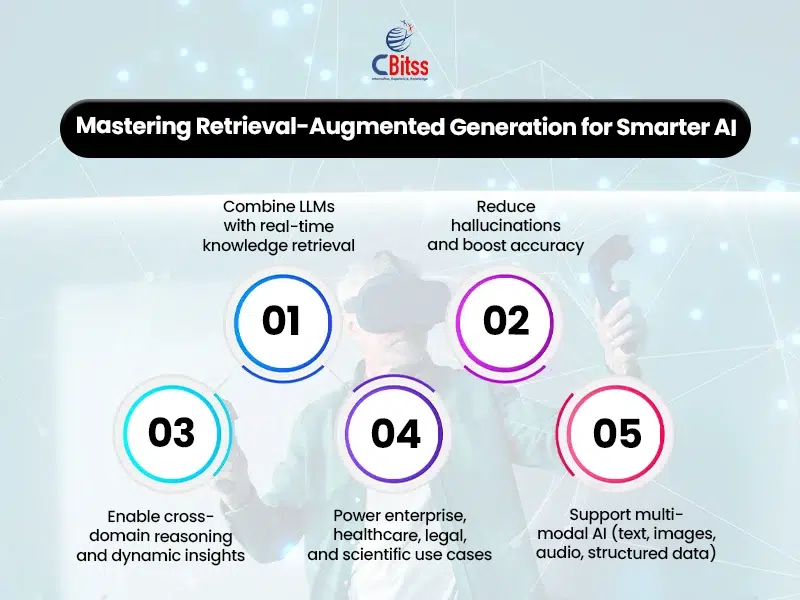
How Retrieval-Augmented Generation Works
- Understanding of the query: The system actively understands the user’s input and then extracts key concepts for clear analysis.
- Information Retrieval: Directing external databases, vector stores, or knowledge graphs, to extract pertinent content.
- Generation: Relate retrieved information into generated output, and then ensure it provides factual and contextually correct answers.
Does LangChain Use Retrieval Augmented Generation?
The answer to the question does LangChain use retrieval augmented generation is YES. Through RAG, LangChain enables AI to integrate generative and external knowledge, thus
fitting the enterprise, research, and customer support use cases. Such integration will facilitate real-time access to the latest information to make AI-generated responses more accurate and relevant.
Moreover, the LangChain framework supports multi-modal inputs and easily integrates text, images, and structured data, and therefore ensures smooth, flexible expansion. Consequently, the developers will be able to create stronger, context-aware AI applications that will be adjustable to the changes in business and user requirements.
Developers exploring trending AI tools often find LangChain at the top of their list due to its flexibility.
Master RAG to boost knowledge, research, and academic success with ease.
Applications of Retrieval-Augmented Generation in 2025
Implications of retrieval-augmented generation (RAG) have continued to grow over the past years:
Enterprise Knowledge Management: AI agents will access information unique to the
company dynamically, allowing the company to offer employees accurate recommendations.
Healthcare: RAG assists in clinical decision-making: it provides access to the most recent research and guidelines.
Legal & Compliance: AI devices access case law and other regulations that enhance accuracy and efficiency.
Scientific Research: Scientists make use of retrieval-augmented generation to process multimodal data, as well as conduct literature reviews.
To see where RAG connects with data science innovation, read about quantum computing: the future of data science.
Multi-Modal RAG
In 2025, Retrieval-augmented generation has grown to multi-modal retrieval-augmented generation, including text, images, audio, and structured data. This enables the AI systems to create more informed, more interactive outputs, ranging from detailed reports to simulations. It also allows the cross-referencing of information in different formats, thereby enhancing understanding and better contextual accuracy. Other industries, such as healthcare and education, are using multi-modal RAG to deliver more actionable and immersive insights.
In 2025, RAG expands into multi-modal retrieval-augmented generation, seamlessly incorporating text, images, audio, and structured data. This allows AI systems to generate richer, more interactive outputs, from detailed reports to simulations. It also enables cross-referencing information from different formats, improving comprehension and contextual accuracy. Industries like healthcare and education are leveraging multi-modal RAG to provide more immersive and actionable insights.
Industries like modern web design and healthcare are leveraging multi-modal RAG to provide more immersive and actionable insights.
Hybrid RAG Models
The latest hybrid models are a combination of RAG with reinforcement learning with human feedback (RLHF) and symbolic reasoning. This allows AI to access information as well as
reason, explain, and check outputs. Hybrid models can adapt to new areas of application and multifaceted problem-solving activities more effectively by incorporating a variety of learning strategies. They also provide better transparency, which enables users to follow the reasoning behind the conclusions made by AI.
For example, in marketing jobs, Hybrid AI can analyze customer data and suggest strategies while citing sources for transparency.
Benefits of Retrieval-Augmented Generation
Latest Knowledge: AI retrieves current information in real time.
Greater Precision: Fewer hallucinations than usual generative AI.
Contextual depth: More knowledge of subtle queries.
Scalability: Support of several sources of knowledge.
Improved Personalization: personalizes responses based on the context and preferences of the user.
Multi-Modal Support: Can support text, images, and structured data in the richer output.
Accelerated Decision-Making: Gathers pertinent information in a short period of time, enhancing efficiency in business and research activities.
For a comparison, see how AI vs Human Intelligence differs in terms of adaptability and reasoning.
Challenges and Considerations
Although RAG has its advantages, it has a number of challenges. There may also be a problem with latency because accessing and incorporating information from outside sources can slow down the response times. Moreover, carefully selecting and validating sources ensures accurate data and directly boosts the reliability of RAG outputs. Security and privacy are also issues of concern, particularly when dealing with confidential or proprietary data. Future systems will actively optimize retrieval, integrate distributed knowledge graphs, and preserve privacy, therefore improving efficiency and enhancing security.
Similar challenges exist across types of machine learning, where data quality and security are equally critical.
Gain hands-on knowledge of Retrieval Augmented Generation for academic excellence.
RAG Across Platforms
AWS – AWS is a service platform to connect the LLMs with knowledge bases.
NVIDIA – Accelerated pipelines of retrieval-augmented generation.
Google Cloud – Improves search engine and recommendations with RAG.
IBM Research – Hybrid what is RAG retrieval augmented generation models integrating symbolic reasoning?
Microsoft Azure – Azure retrieval-augmented generation deployment.
Salesforce – AI agents customize customer support with RAG.
For a broader view of digital adoption, explore PPC in digital marketing and how AI-driven RAG is reshaping campaigns.
Future Outlook: Augmented Regeneration
In the future, augmented regeneration is the next generation. In addition to straight off retrieval, AI can:
Anticipate the lack of knowledge and independently find missing information.
Mechanical improvement of products through feedback loops.
Implement cross-domain reasoning within real-time decisions and creative applications.
This is the subsequent development of what is retrieval augmented generation RAG, where AI is no longer an information retrieval but rather an autonomous reasoning.
For businesses, this evolution ties closely to the most wanted digital marketing skills that combine AI, analytics, and creativity.
Ethical and Regulatory Considerations
- Bias avoidance and fair retrieved content.
- Clear reference of the sources to be held accountable.
- Adherence to privacy legislation of sensitive sectors.
- Having data security in accessing external sources of knowledge.
- Checking against the misinformation or untrustworthy information in the generated results.
- Observing intellectual property and copyright of the retrieved material.

Conclusion
Therefore, when you doubt what is Retrieval Augmented Generation RAG, just remember it is what has changed AI because it involves the integration of LLMs with real-world information that is dynamic. Retrieval-augmented generation (RAG) enhances precision, context, and reasoning, regardless of enterprise knowledge management in healthcare and research. With AI stepping towards augmented regeneration, systems will also keep on learning, adapting, and creating multi-modal content, and it will also define the next age of smart applications.
Ready to make the full potential of AI with the help of retrieval-augmented generation?
Now and in the future, read how RAG will change your business, research, or applications, and be competitive in the age of smart, context-sensitive systems.
Also, check out prompt engineering, a key skill for making RAG-powered systems more efficient.

Sukhamrit Kaur
Sukhamrit Kaur is an SEO writer who loves simplifying complex topics. She has helped companies like Data World, DataCamp, and Rask AI create engaging and informative content for their audiences. You can connect with her on LinkedIn.



